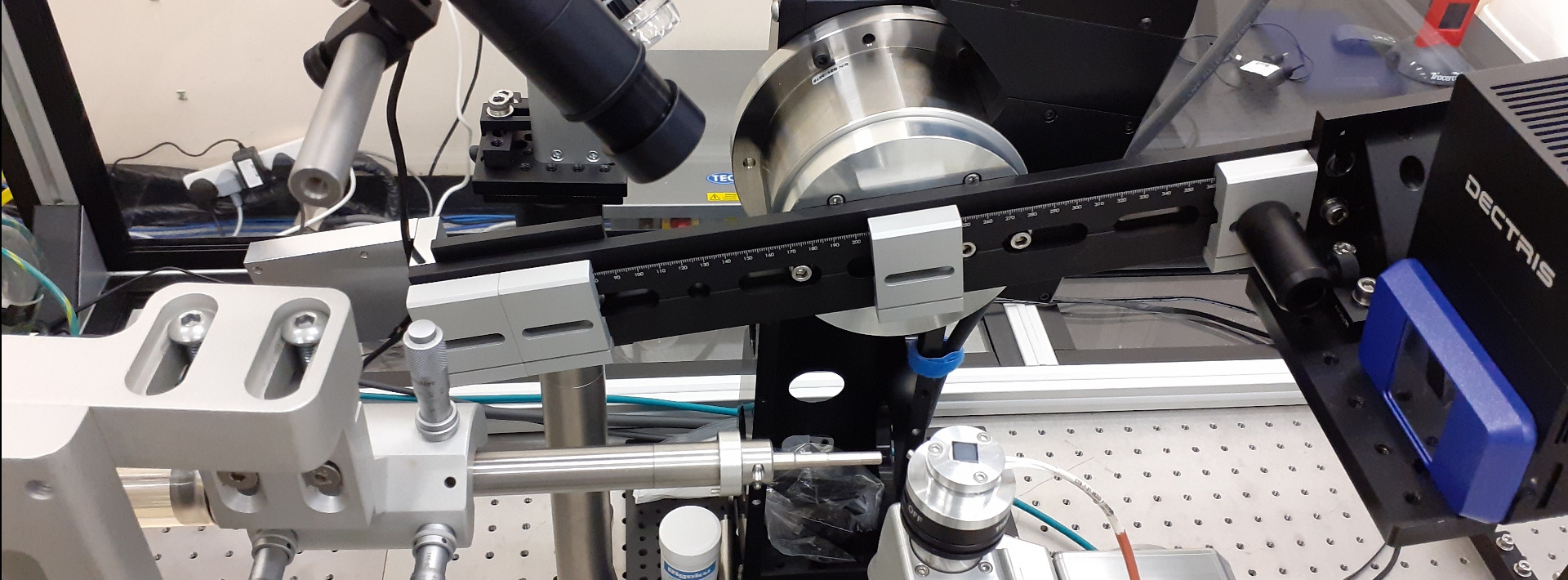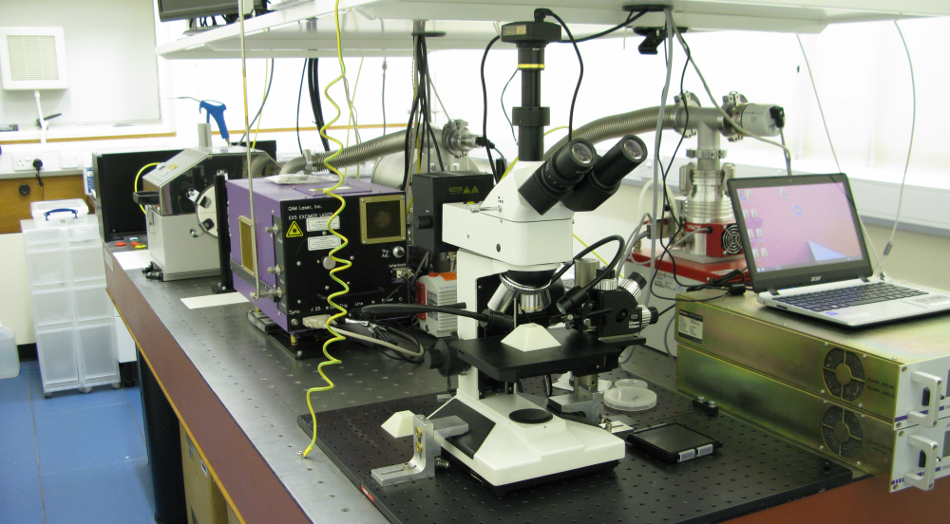Difference between revisions of "Facilities"
m (→X-ray Diffraction Laboratory) |
m (→Facilities:) |
||
| Line 5: | Line 5: | ||
== Facilities: == | == Facilities: == | ||
| − | === | + | |
| + | === X-ray Diffraction Imaging Laboratory === | ||
<div class="res-img"> | <div class="res-img"> | ||
| − | [[File: | + | [[File:xrdi.jpg|center]] |
</div> | </div> | ||
| + | The X-ray Diffraction Imaging (XRDI) system consists of a Rigaku MicroMax-007 rotating anode x-ray generator that generates x-rays with a wavelength of 1.54 Å (Cu anode) and focuses x-rays down to a diameter of 0.075 mm. X-ray are imaged with a Dectris Eiger2 area detector that is capable of single photon counting and can operate at high frequency. This setup is ideally suited for nanoscale crystal structure determination and streamlined sample preparation for advanced lens-less X-ray imaging techniques such as [[Research#Coherent Diffraction Imaging | Bragg Coherent X-ray Diffraction Imaging]] (BCXDI) as performed at synchrotron facilities such as the Diamond Light Source. | ||
| − | |||
| − | |||
| − | + | === Synthesis Laboratory === | |
| − | === | ||
<div class="res-img"> | <div class="res-img"> | ||
| − | [[File: | + | [[File:laserlab.png|center]] |
</div> | </div> | ||
| − | The CXS | + | The CXS Synthesis laboratory is primarily used for the synthesis of nanometre scale crystals and device structures. Pulsed laser deposition (PLD) permits the synthesis of complex transition metal-oxide materials such as vanadates, cuprates and manganites as thin films or as heterostructures. Our laboratory houses a 248 nm KrF and a 193 nm ArF excimer laser, both of which are routinely used for pulsed laser deposition and laser-assisted fabrication. The CXS Synthesis laboratory is also equip with two thermal vacuum tube furnaces and various gases for nanoscale crystal synthesis via thermal CVD. The synthesis equipment is supported by an optical table and accompanying overhead rack for electrical equipment. |
| + | |||
| + | <br clear=all> | ||
Revision as of 13:52, 24 November 2021
Facilities:
X-ray Diffraction Imaging Laboratory
The X-ray Diffraction Imaging (XRDI) system consists of a Rigaku MicroMax-007 rotating anode x-ray generator that generates x-rays with a wavelength of 1.54 Å (Cu anode) and focuses x-rays down to a diameter of 0.075 mm. X-ray are imaged with a Dectris Eiger2 area detector that is capable of single photon counting and can operate at high frequency. This setup is ideally suited for nanoscale crystal structure determination and streamlined sample preparation for advanced lens-less X-ray imaging techniques such as Bragg Coherent X-ray Diffraction Imaging (BCXDI) as performed at synchrotron facilities such as the Diamond Light Source.
Synthesis Laboratory
The CXS Synthesis laboratory is primarily used for the synthesis of nanometre scale crystals and device structures. Pulsed laser deposition (PLD) permits the synthesis of complex transition metal-oxide materials such as vanadates, cuprates and manganites as thin films or as heterostructures. Our laboratory houses a 248 nm KrF and a 193 nm ArF excimer laser, both of which are routinely used for pulsed laser deposition and laser-assisted fabrication. The CXS Synthesis laboratory is also equip with two thermal vacuum tube furnaces and various gases for nanoscale crystal synthesis via thermal CVD. The synthesis equipment is supported by an optical table and accompanying overhead rack for electrical equipment.

